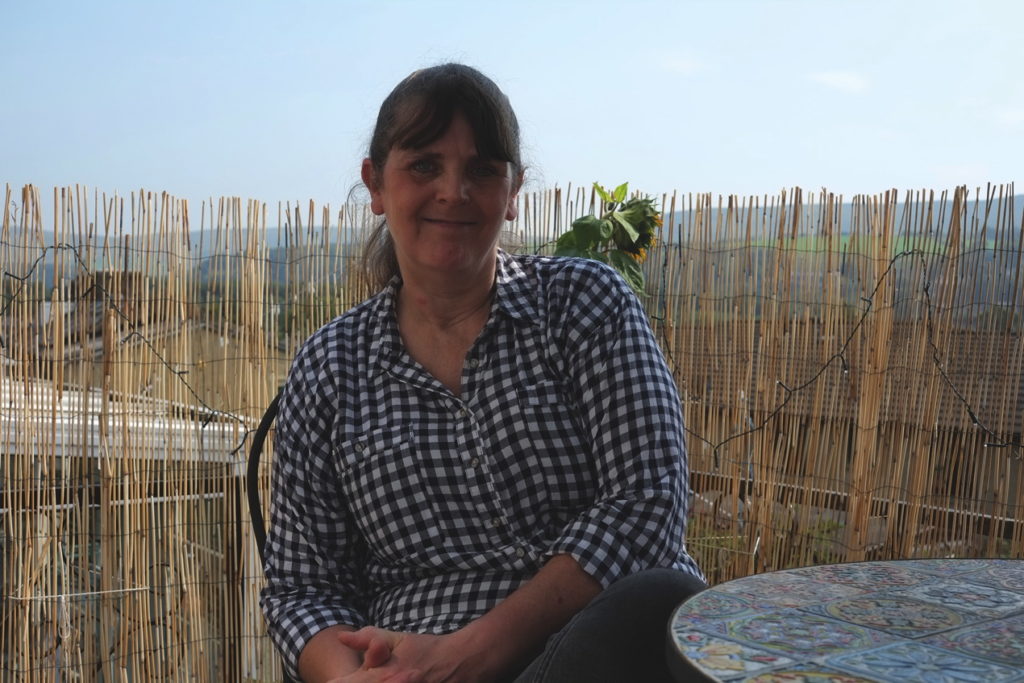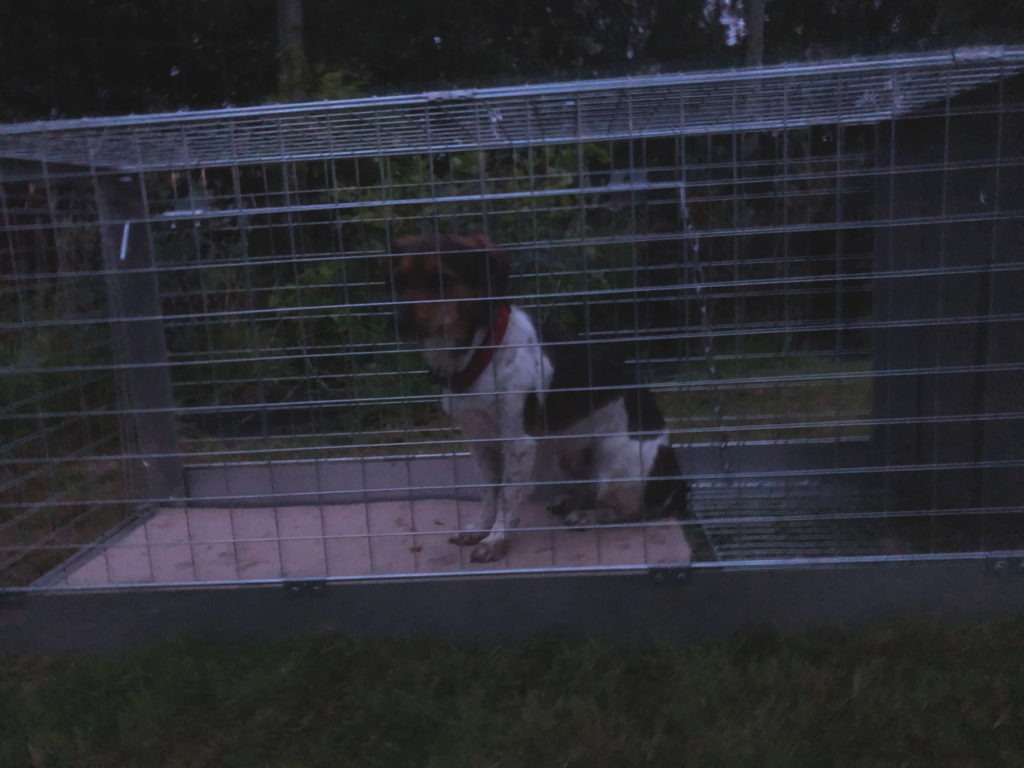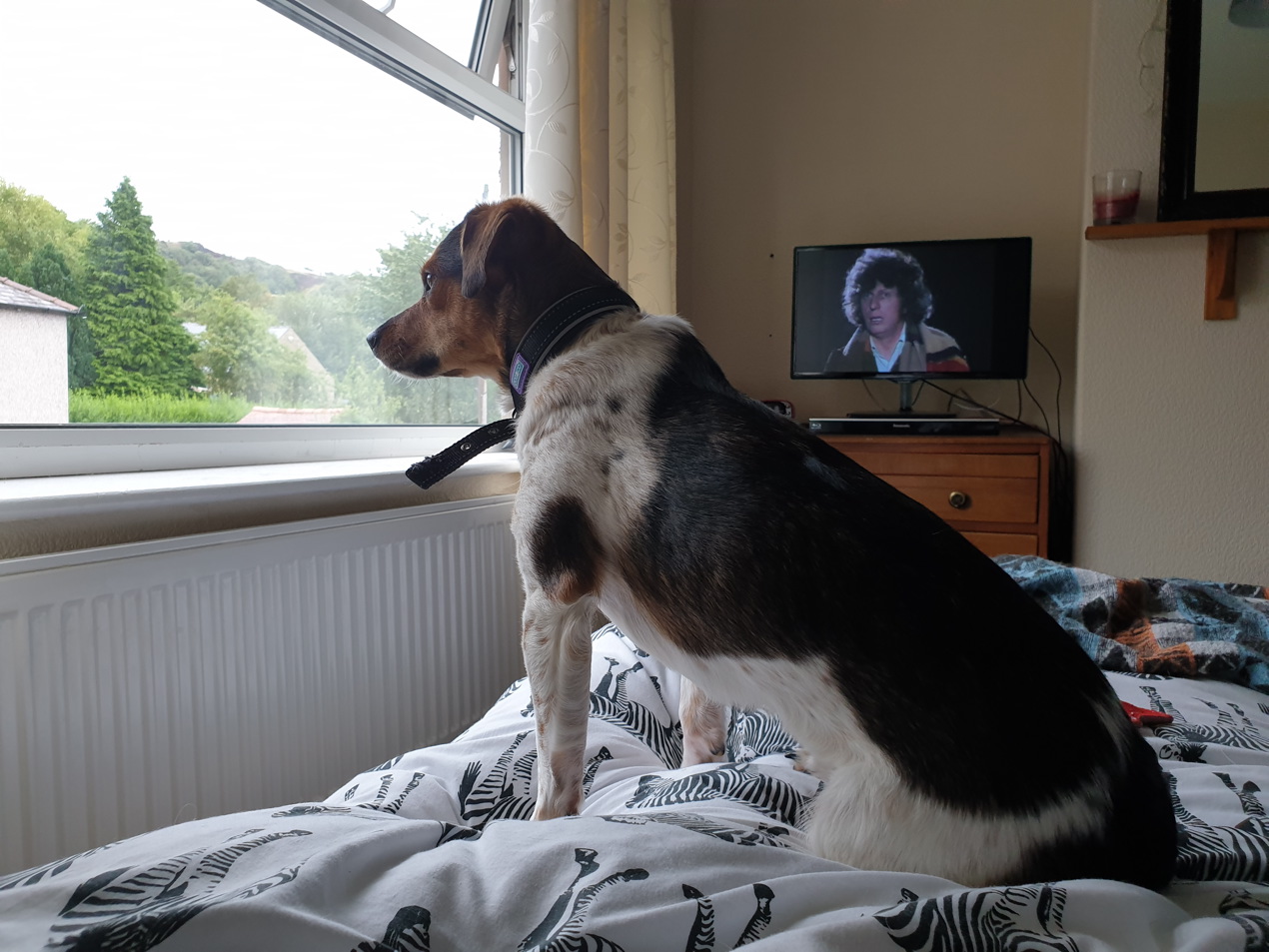Taking a lead
Harley the dog goes missing and Michelle Newns-Peers talks about the sacrifices she’s made to complete her rescue missions
A train makes its way along the valley bottom, its rumble and whine rising up to this field on the edge of the Pennine moors. When the train has gone, silence returns. Michelle Newns-Peers lies on the grass, arm outstretched and cooked chicken on her open palm. On a cool Wednesday in August, the sun is setting and a gentle rain has started to fall.
After five days on the run Harley, the dog that Newns-Peers is trying to lure out, is exhausted and hungry. Eventually the one-year-old crossbreed, something like a beagle mixed with a jack russell, crawls out from beneath a large shrub, paws dragging her along on her belly. She snakes out just enough to nibble at the food on offer and then retreats back beneath the bush.
“I’m going to have to use the trap. She won’t come near enough to get a lead on.”
My partner James and I wait by the gate at this hillside flower farm, four miles from where we lost our dog when she slipped from her harness on her first tentative walk. We’re told not to approach the spot where the dog rescuer, who has been helping hunt for Harley since she went missing, is lying. We stare into the growing darkness, looking for any movement at the far side of the field, panicking that Harley might escape into the hills, never to be seen again.
Half an hour later, Newns-Peers emerges, shaking her head.
“I’m going to have to use the trap,” she says. “She won’t come near enough to me to get a lead on.”
James and I feel sick with anxiety that she is so close but out of reach, still carrying the guilt over our incompetence at losing her the day after she arrived from the Bulgarian rescue centre where she was raised. Newns-Peers reassures us that ours is a common experience.
“Many of the dogs that we end up rescuing are from Eastern Europe,” she explains. “Usually just after they’ve arrived in the country.”
New owners are often unprepared for the traumatised state of the dog after days on the road. “Something will happen, something spooks them, and they bolt. They run off to try and get back to what they know.”
She has been rescuing animals since she was a child. “I remember when I was eight, climbing out of an attic window to rescue my cat who was stuck on the roof,” she says. “I didn’t think how dangerous it was.”
But her interest in animal rescue was cemented in 2016, when she helped track down and capture a stray lurcher in her hometown of Bury. She ended up adopting the dog.
“I felt this was something that I could do more of, that it was my forte, I suppose,” she says.
She joined the charity Harvey’s Army, which helps people reunite with lost pets, and then started her own group, the Greater Manchester Lost Dog Search and Rescue Capture Team. Her efforts were rewarded last year when she was named volunteering hero in the Pride of Bury awards.
Since starting this volunteer work in earnest she has done dozens of trappings, like the one she is attempting with Harley, and reunited hundreds of owners with missing pets. As well as dogs and cats, she’s rescued all kinds of other animals including horses and, once, a pet snake.
Not all dogs are found speedily or easily. Newns-Peers once spent 10 nights out on a hilltop in December trying to get a dalmatian to come to her.
“It was freezing. I was lying under blankets to try and keep warm but I’ve never been so cold,” she says. “I get emotionally involved with every single one of them. I don’t sleep until I know a dog I am tracking is safe.”
Her volunteer work doesn’t get in the way of her day job as a supply teacher, but she doesn’t find much time to relax, sometimes spending her lunch breaks in her car making phone calls and updating Facebook posts. The time that she does find to relax is often spent in the company of her own three dogs.
And there have been some personal costs. The 54-year-old mother of three still lives with her husband but they have separated. With her volunteer work increasing every year, things were getting more and more intense.
“He gave me an ultimatum. It was him or the dogs. I chose the dogs. I couldn’t stop this and walk away.
“If I could get paid enough do this full time I would. I don’t need luxuries or anything – just enough to feed myself and my dogs and keep a roof over our heads. It’s the unconditional love that dogs give you. They don’t care what you look like or what you’ve done. They’re pure, that’s what they are.”

We’d first met Newns-Peers on Sunday having spent all of Saturday trying to reach Harley in the bramble bushes where she’d first hidden. We could hear her moving around and giving the occasional whimper, but couldn’t get to her, despite hacking through the base of the bush and getting a few scars in the process. In the end we had to leave her where she was and head home for a sleepless, worried night.
Newns-Peers and another volunteer from Harvey’s Army arrived with a trap on Sunday evening. They set it up with a cooked chicken inside and even had a little barbeque on the go, thinking it might lure her out. But Harley had already moved on.
In the days that followed Newns-Peers kept in close contact with us. Alerting us to Facebook posts we may have missed and setting up food stations in areas where she’d been spotted with motion sensor cameras nearby. We put up posters and responded to messages. Another local lost dog was causing all kinds of confusion in the hunt for our own hound. Often we resigned ourselves to the thought that we would never see the dog again. But Newns-Peers kept us motivated and her tenacity was admirable.
The day we lost Harley, we made, it turns out, a few errors. We had quickly amassed a large group of people who were out calling for her while we dug around in the bramble bushes trying to reach her. At one point we left the site and returned home to fetch some food, during which time she apparently came scampering out after us, only to be scared back by someone who tried to catch her.
“If your dog runs away, stay where you last saw them and they will probably come back to you,” Newns-Peers explains. “Even if you have to sit there for hours. And if your dog is scared, don’t approach them or start calling them or getting other people to chase after them. This can just scare the dog further away. Dogs are great at looking out for themselves but when people start chasing them, that’s when they get scared and start running into roads and things like that.”
Harley was chipped and we’d updated her details so that if she was found, we could be contacted. This is required by law, but it’s not well enforced, says Newns-Peers. “You’d be surprised how many dogs aren’t chipped, or if they are chipped, aren’t registered.”
And luckily, we did get one other thing right. “Get the word out to as many people as you can,” says Newns-Peers. “Make sure your Facebook posts are public and shareable and people can comment on them. Share posts to local groups, not just groups about lost dogs. And reach out for help too, from organisations like Harvey’s Army or my own group.”
It was thanks to our local Facebook group, as well as our dog rescuer’s efforts, that we managed to track Harley’s movements as she moved through the Calder Valley, a sighting here, a bit of CCTV footage there, and finally a phone call from the flower farmer, which led us to this field where Newns-Peers has now set up the same dog trap she’d used on Sunday night.
It’s been ages since we’ve heard anything. We wait. And we wait. Apparently, Harley is refusing to go in the trap to eat the food. It’s got fully dark now. We start to panic again. What if she gets away? What if there’s just no way of getting her into the trap? And then my phone pings. It’s a message from Newns-Peers. No words. Just a photo. A timid dog sitting quietly in a metal cage, staring at the camera through the bars.


Leave a reply
Your email address will not be published.